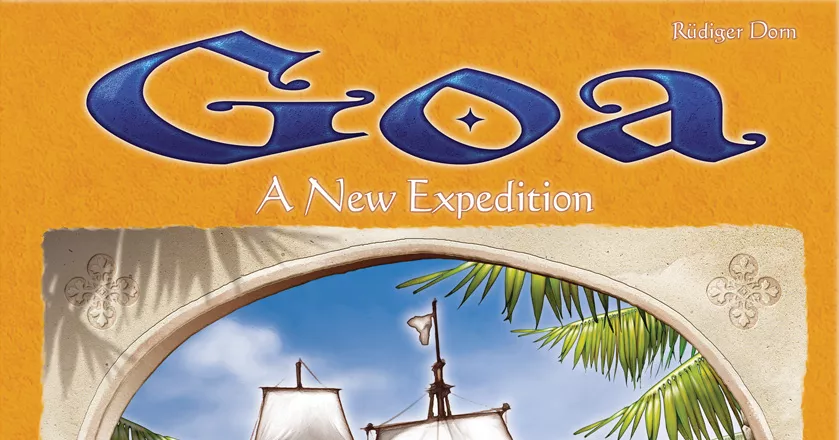The Goa game is one of the most revered strategic board games in modern Euro-style gaming. First released in 2004 by Hans im Glück and designed by Rüdiger Dorn, Goa has captivated board game enthusiasts with its rich gameplay, historical setting, and strategic depth. Whether you’re a casual gamer or a hardcore strategist, the Goa board game offers a complex and rewarding experience.
In this article, we’ll explore what the Goa game is all about, how it’s played, its significance in the board gaming world, and frequently asked questions. This guide is tailored for new players, seasoned board gamers, and everyone curious about this highly-rated strategy game.
What is the Goa Game?
The Goa game is a Euro-style board game centered around the spice trade during the colonial era. Set in the 16th century, players take on the roles of Portuguese spice merchants attempting to build a colonial empire centered around the Indian region of Goa. The game emphasizes economic development, auction mechanics, and resource management.
The central objectives include:
- Expanding plantations
- Upgrading colonies
- Managing trade routes
- Efficient use of action cards and development tiles
Each player competes to gain the most victory points through strategic planning and wise resource allocation.
Gameplay Overview
1. Game Setup
The board is divided into two main sections:
- A central auction grid of 5×5 tiles representing different actions or resources.
- Player boards for tracking individual developments.
Each player starts with:
- A set number of ships and workers
- Plantation and colony markers
- A starting amount of spice
2. Auction Phase
The heart of the Goa game app lies in its auction phase. Players take turns placing an auction marker on one of the available tiles. These tiles might represent plantations, spices, ships, colonists, or even extra actions.
The highest bidder wins the tile and either takes its immediate benefit or stores it for later use. Bidding requires a careful balance—overspending can cripple your economy, but losing out on a critical tile could hinder your long-term strategy.
3. Action Phase
After auctions, players take turns performing a number of actions, such as:
- Establishing or upgrading plantations
- Developing colonies
- Acquiring expedition cards
- Using special development tiles
Each action brings you closer to achieving victory points.
Why the Goa Game Stands Out
There are several reasons why the Goa game is so highly regarded among board game enthusiasts:
Strategic Depth
Goa is a game of tough decisions. Every auction and action phase forces players to prioritize long-term strategy over short-term gains. It’s a game of optimization and efficiency.
Balanced Mechanics
Though complex, the game is finely tuned. No one strategy guarantees victory, and a skilled player can recover from early mistakes with careful planning.
Replayability
With randomized tile setups and varying player strategies, no two games of Goa are the same. The game remains fresh even after dozens of plays.
Historical Theme
The spice trade theme isn’t just decorative—it ties into every mechanic. From trading ships to colonization, the Goa game offers a unique glimpse into the colonial era through a modern game lens.
Who Should Play the Goa Game?
The Goa board game is best suited for players who enjoy:
- Deep strategic planning
- Economic and resource management
- Auction-based gameplay
- Competitive play with minimal luck
It is recommended for ages 12 and up, and typically supports 2–4 players. A full game takes around 90–120 minutes.
If you enjoy games like Puerto Rico, Power Grid, or Agricola, you’ll likely find Goa to be a welcome addition to your collection.
Goa Game Expansion and Editions
Over the years, the Goa game has seen a few revisions. The most notable is the 2012 edition titled Goa: A New Expedition. This version includes minor rule tweaks and improved component quality.
Key changes in the revised edition:
- Balanced tile distribution
- Clarified rules for beginners
- Enhanced artwork and player boards
The expansion does not drastically change gameplay but improves accessibility and aesthetics.
FAQs About the Goa Game
Q1: Is the Goa game suitable for beginners?
Answer: While the game is on the heavier side of strategy games, dedicated beginners can certainly enjoy it. However, it may require a learning session or two to grasp all the rules and strategic nuances.
Q2: How long does a typical game of Goa take?
Answer: A typical game takes between 90 to 120 minutes, depending on the number of players and familiarity with the game.
Q3: Can you play the Goa game with just 2 players?
Answer: Yes, the game supports 2 players, though many feel it shines best with 3–4. The dynamics of auctioning and resource competition become more intense with more players.
Q4: Is there a digital version of the Goa game?
Answer: As of now, there is no official digital version of the Goa board game on platforms like Steam or Board Game Arena. However, fan-made versions may be available on Tabletop Simulator.
Q5: Is the game historically accurate?
Answer: While inspired by real historical elements like the spice trade and Portuguese colonization, the Goa game is not meant to be a historically accurate simulation. It uses the setting primarily as a thematic backdrop.
Q6: Where can I buy the Goa game?
Answer: The game is available from specialty board game retailers and online platforms like Amazon, eBay, and BoardGameGeek Marketplace. Availability may vary by region.
Conclusion: Is the Goa Game Worth It?
The Goa game is a masterclass in strategic board game design. Its blend of auction mechanics, economic planning, and long-term strategy makes it one of the standout Euro games of the 2000s. While it’s not the easiest game to learn, the investment in time and effort is richly rewarded with deep gameplay and replay value.

